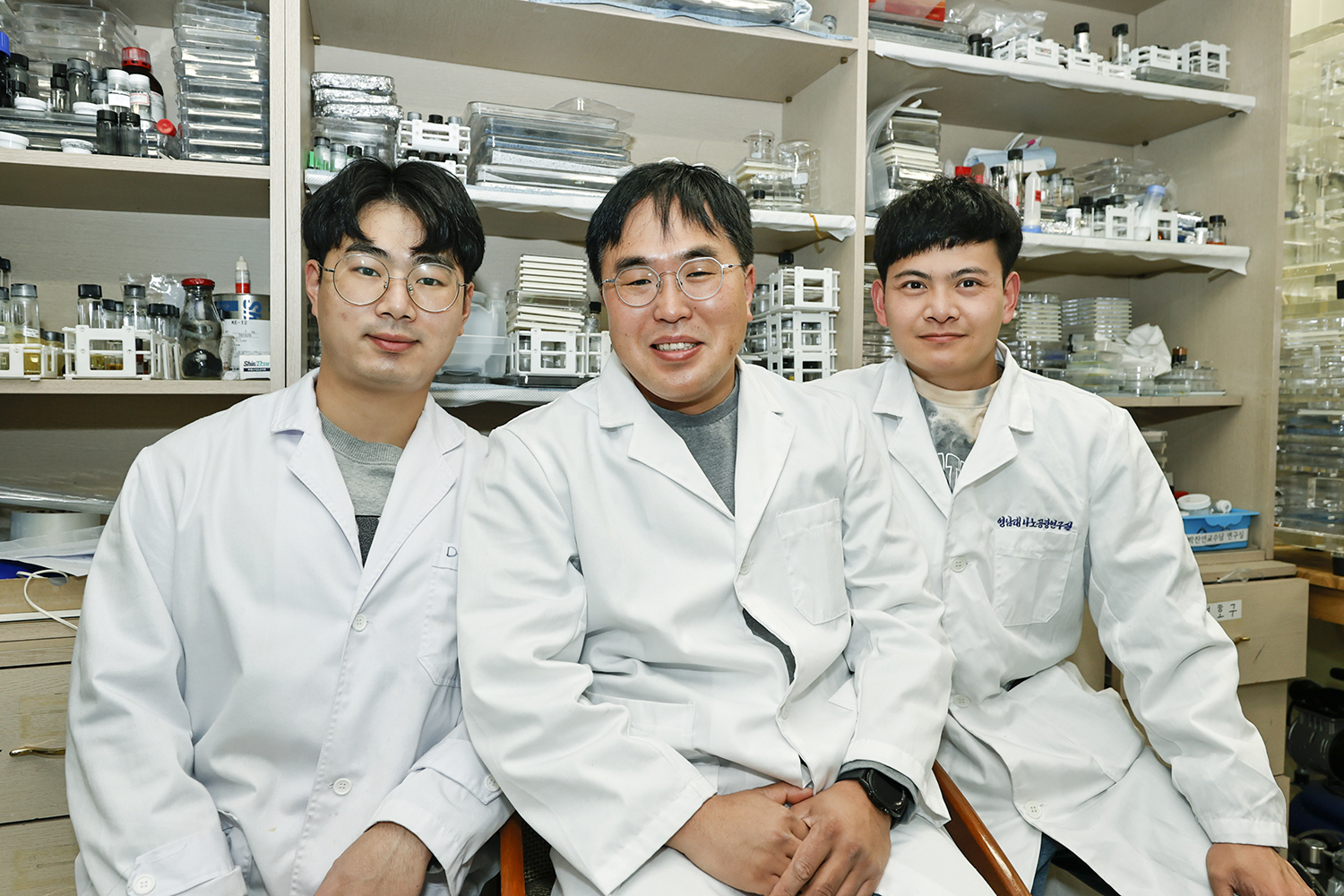Professor Kim Se-hyeon’s Research Team Develops Next-generation Flexible Display Materials N
No.89331- Writer pr
- Date : 2021.04.07 15:08
- Views : 8924
Developed fluorine organic/inorganic nano-hybrid materials that are flexible and printable
Supplements weakness of existing materials making it possible to procure key organic/inorganic characteristics
Published in recent issue of global academic journal in the materials science sector

<School of Chemical Engineering Professor Kim Se-hyeon’s Research Team (major in polymer and bio materials)>
Professor Kim’s research team including Ye Heqing (22, sixth term in integrated master’s and doctorate’s program) and Wang Rixuan (30, 2nd term in doctorate’s program) of the Graduate School of Chemical Engineering developed a fluorine organic/inorganic nano-hybrid materials technologies that can be applied in thin-film transistors (TFTs) for next-generation flexible/print electronic materials through joint-research with Professor Kim Joo-young’s research team at Kangwon National University.
Professor Kim said, “We developed a new flexible/print material that can be applied to the insulation layer in TFTs, which are unit materials of switching and memory of flexible/print electronic products. The developed organic/inorganic nano-hybrid materials not only have high insulation and chemical resistance, which are the features of inorganic materials, at low temperatures, and can also procure highly flexibility and solution processibility, which are the features of organic materials.” He added, “This material was designed and synthesized to be able to extend the long-term storage safety for more than one year and six months without additives in sol (particles being dispersed in the solution) solution, which is a weakness of existing organic/inorganic nano-hybrid materials.
The newly developed material is expected to not only accelerate commercialization of various next-general electronic materials such as for flexible and wearable display, RFID (radio-frequency identification tags), smart cards, etc., but also in various fields such as flexible mobile phone cover glass, hard coating, and bag materials. The research team applied this technology to develop TFTs and logic circuits through the printing process.